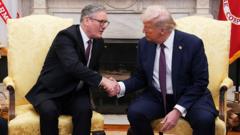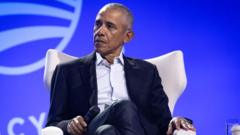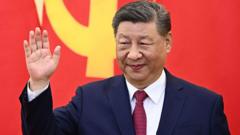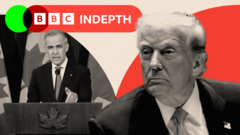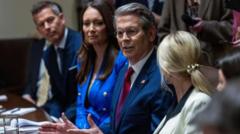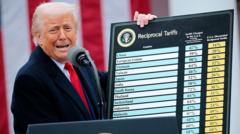As President Trump's administration paused sweeping tariffs, key figures like Treasury Secretary Scott Bessent emerged with different approaches, leading to market confusion and speculation on the future of U.S. trade policy.
Inside Trump's Tariff Team: Good Cops and Bad Cops
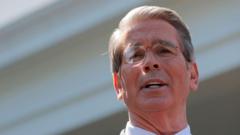
Inside Trump's Tariff Team: Good Cops and Bad Cops
Analyzing the internal dynamics of the Trump administration's tariff policy reveals shifting roles and contrasting strategies among key officials.
In the dramatic aftermath of President Donald Trump's sudden decision to pause a series of significant tariffs, the dynamics within his tariff team are under scrutiny. Treasury Secretary Scott Bessent quickly emerged as the public face of the administration's decision-making process, notably different from his colleagues Commerce Secretary Howard Lutnick and trade adviser Pete Navarro, both of whom maintained a more combative posture on tariffs. Bessent’s approach, characterized as “playing the good cop,” has been praised by trade policy veterans for helping to steer the Trump administration away from a potential trade war.
During a press conference on April 9, following the announcement that sent markets soaring, Bessent noted the "great courage" it took to make such a decision. In contrast, Lutnick and Navarro's absence at the briefing raised eyebrows and highlighted the shifting influence among Trump's advisors. Analysts, including William Alan Reinsch of the Center for Strategic and International Studies, have pointed out that Bessent’s success lies in his ability to communicate with Trump without directly challenging him, suggesting that he focused on addressing the president’s economic objectives while reminding him of the market's condition.
Prior to the announcement, Bessent reportedly played a critical role in persuading Trump to reevaluate his position on tariffs, engaging in discussions directly with the president. His financial background, coupled with reservations about tariffs articulated earlier in his career, likely positioned him as a valuable advisor, especially when Trump seemed disconnected from market reactions. This contrasts sharply with the more hardline perspectives of Lutnick and Navarro, which have led to mixed messaging regarding U.S. trade policy.
Observers noted that the administration's communication strategy appeared to be deliberately chaotic, as they deployed various spokespeople to convey differing messages on tariffs. Some experts argue this approach served to manage diverse political audiences while simultaneously sowing confusion within the markets. The contrasting viewpoints within the administration complicate the understanding of who truly influences policy decisions and outcomes, making it increasingly challenging for investors to navigate the landscape.
As the situation unfolds, analysts suggest that Bessent’s emerging role may stabilize the administration's stance on tariffs moving forward. With expectation of a more structured approach, some believe this import management could restore investor confidence. The trajectory of U.S. trade policy remains uncertain, yet the internal realignment within Trump's administration indicates a need for consistent messaging amid fluctuating market dynamics. Ultimately, this ongoing evolution may shape both domestic economics and international trade relationships for the foreseeable future.



